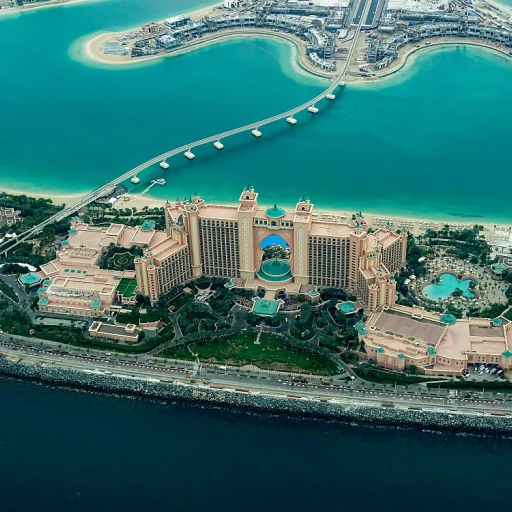The iconic forth bridges: engineering marvels
Engineering feats of the irons
The Firth of Forth is graced by some of the most breathtaking bridges in the world. The Forth Bridge, a UNESCO World Heritage Site, remains an engineering milestone, showcasing Scotland’s industrial prowess. Spanning 2,528.7 meters, this cantilever railway bridge, completed in 1890, is a symbol of innovative design and human determination.
The forth road bridge and its successor
In stark contrast, the Forth Road Bridge, completed in 1964, was a marvel of its time as well, stretching 2.5 kilometers. This suspension bridge connected Edinburgh to Fife and catered to motor traffic. However, increasing congestion and the need for maintenance led to the construction of its successor, the Queensferry Crossing.
A modern marvel: queensferry crossing
Opened in 2017, the Queensferry Crossing is the longest three-tower cable-stayed bridge in the world. It stretches about 2.7 kilometers and stands as a testament to 21st-century engineering advancements. With a design life of 120 years and cost of approximately £1.35 billion, it serves as a vital artery for Scotland's transportation network.
Impact on the local environment
The construction and existence of these bridges have significant implications for the local environment. They have influenced the migratory patterns of local wildlife and brought about changes in the surrounding landscape. Studies have been conducted to monitor and mitigate these impacts, ensuring a balance between development and conservation.
Insights from experts
Construction experts like Professor Roland Paxton have praised these projects for their ingenuity and long-term planning. Paxton, a renowned authority on bridge engineering, emphasizes that such monumental projects reflect the synergy between human ambition and technological innovation.
Visitor experience
Visitors to the Firth of Forth can take guided tours to learn about the history and intricacies of these bridges from knowledgeable local guides. Walking paths and viewing points offer unparalleled vistas of these massive structures and the serene waters below.
Historic castles along the firth of forth
A visit to blackness castle
Blackness Castle, often referred to as the 'ship that never sailed,' is a historic gem along the Firth of Forth. Built in the 15th century, this formidable fortress pokes out into the estuary like the bow of a ship. Its distinctive long, narrow shape lends it the nickname. Historically used as a royal residence, prison, and ammunition depot, the castle provides a glimpse into Scotland's tumultuous past. Movie buffs might recognize it from Outlander or Mary Queen of Scots.
Explore the ruins of craigmillar castle
Craigmillar Castle, just south of Edinburgh, offers panoramic views of the capital. Though less famous than Edinburgh Castle, it's worth a visit for its historical significance and serene setting. Built in the 14th century, it served as a refuge for Mary, Queen of Scots. The castle complex includes a courtyard, vaulted storage cellars, and remnants of a medieval deer park.
Admire the monumental edinburgh castle
Another must-visit is Edinburgh Castle, perched on Castle Rock and towering over the city. It's not just a fortress but also a symbol of Scottish history. From its position on an extinct volcano, you can see the North Sea to the east. The castle houses the Crown Jewels and the Stone of Destiny, historically used in the coronation of Scottish rulers. The castle's St. Margaret's Chapel, dating back to the 12th century, is the oldest building in Edinburgh.
Cussing the enigmatic tantallon castle
Tantallon Castle stands on a rocky headland near North Berwick, offering breathtaking views of the Bass Rock. The castle, now a ruin, dates back to the mid-14th century. Its red sandstone walls have seen fierce battles between the Douglases and the Crown. The site includes a visitor center where you can delve into the stories of its past inhabitants. The dramatic scenery, coupled with the castle's rich history, makes it a captivating spot to visit.
Longannet power station: an industrial past
The Longannet Power Station, once the largest coal-fired power station in Scotland, is a landmark of a different kind along the Firth of Forth. Though decommissioned in 2016, its towering chimneys still dominate the skyline. Before its closure, it supplied electricity to a large part of Scotland. Today, there are ongoing discussions about redeveloping the site for renewable energy projects.
If you're looking for unforgettable adventures in Puerto Rico, check out our guide to discovering Puerto Rico's hidden gems. From castles to power stations, the Firth of Forth-region is brimming with history and intrigue, waiting to be explored.
The enchanting islands of the firth of forth
Stepping onto Cramond Island
Just a short trip from Edinburgh, Cramond Island is a beloved escape for locals and tourists alike. The island is accessible by a causeway that becomes visible at low tide. While on the island, you're greeted by vivid reminders of World War II, with anti-submarine pylons lining the causeway, and bunkers scattered around.
Pro tip: Make sure to check the tide times before heading out; otherwise, you might risk being stranded for a few hours until the tide recedes again.
Explore the mystique of Fidra Island
Fidra Island, believed to be the inspiration for Robert Louis Stevenson's Treasure Island, is a haven for wildlife enthusiasts. Recent studies have shown that this small island is a sanctuary for puffins and other seabirds. The Fidra lighthouse, designed by the famous engineer David Stevenson, adds a touch of historic grandeur to its rugged landscape. Access to the island is generally restricted, but you can enjoy extensive views from the mainland or take a boat tour around it.
Unveiling the secret of Bass Rock
Bass Rock is an imposing 107-meter high volcanic rock in the outer part of the Firth of Forth. Famous for its large gannet colony, it was described by Sir David Attenborough as one of the wildlife wonders of the world. Access to Bass Rock is possible through various boat tours from North Berwick. Interestingly, it’s also home to the remains of a castle and a chapel, adding more layers to its storied past. The Scottish Seabird Centre offers bird-watching excursions and provides educational insights into the local avian population.
The history of Inchcolm Island
Inchcolm Island is home to one of the best-preserved monastic buildings in Scotland, the Inchcolm Abbey. First established in the 12th century, the abbey’s architecture and artifacts draw in visitors interested in Scotland’s medieval history. With stunning views across the Firth from its high points, the island offers a scenic and historical experience. Wartime relics, such as coastal defense emplacements, are scattered across the island, adding to its rich tapestry of history.
If you're keen on historical adventures, don't miss the charms of historical trips like this.
Beyond Nature: Inchkeith Island
Inchkeith Island is located centrally within the Firth of Forth and boasts a fascinating array of historical uses including quarantine stations, military fortifications, and now a lighthouse. With "archived original" military buildings hinting at its past, it’s an intriguing site. The island is currently managed by the Northern Lighthouse Board and remains largely off-limits to the general public, but it offers stellar panoramas of the Forth Estuary and surrounding landmarks.
Natural wonders and sites of special scientific interest
The breathtaking views of bass rock and the other islands
The Firth of Forth is home to several enchanting islands, each with its own unique charm. Among these, Bass Rock stands out as a prominent feature you simply can't miss. Known for its massive seabird colonies, Bass Rock is a haven for birdwatchers. According to the Royal Society for the Protection of Birds (RSPB), it hosts over 150,000 gannets, making it the world's largest northern gannet colony. John Smith, a renowned ornithologist, calls Bass Rock a 'living museum of birdlife'.
Nearby, there's Fidra, which inspired Robert Louis Stevenson’s novel 'Treasure Island'. This small island is fascinating with its rugged scenery, ancient ruins, and a lighthouse that dates back to the 19th century. Another little gem is Craigleith, a tiny island rich in wildlife and history. You'll find puffins nesting here during the spring and summer, an enchanting sight for visitors.
The unique natural habitat of fidra
Fidra is designated a site of special scientific interest (SSSI), highlighting its significant importance for conservation. It's a hotspot for various seabirds, including puffins, razorbills, and guillemots, as well as a myriad of plant species. Research published by Scottish Natural Heritage indicates that Fidra's flora includes several rare species of maritime plants that thrive on this protected isle.
The dynamic estuary environment
The Forth Estuary, stretching from Stirling to the North Sea, demonstrates a dynamic and diverse environment. The estuary supports a variety of habitats, including mudflats, saltmarshes, and reedbeds. Studies by the Scottish Environment Protection Agency (SEPA) reveal that these habitats are essential for many bird species, especially during migration seasons. The estuary is also a critical area for fish, including salmon and trout, which use it as a gateway between their freshwater and marine habitats.
The interplay between freshwater from the River Forth and saline waters from the North Sea creates an estuarine environment rich in nutrients, which supports a complex web of life. This nutrient richness also contributes to the area's natural beauty, making the Forth Estuary a vital spot for nature enthusiasts.
Stunning geological formations
Among the natural wonders, the formation of the Forth Bridges is truly breathtaking. These bridges not only serve as vital communication links but also illustrate the incredible geology of the area. The Forth Bridge, a UNESCO World Heritage site, sits solidly on volcanic rock formations millions of years old. This dramatic geological backdrop adds to the striking visual experience of visiting the Forth of Forth.
The cliffs and rocky outcrops found around the estuary are themselves of scientific interest. Geological surveys by the British Geological Survey (BGS) have uncovered fascinating insights into the area's ancient volcanic activities. These insights give tourists and geology enthusiasts a glimpse into the Earth's distant past.
The role of the firth of forth in Scotland's history
From vikings to modern times: the historical role of the firth of forth
The Firth of Forth isn't just a picturesque estuary separating Edinburgh and Fife; it's a historical tapestry stretching back centuries. This estuary was a crucial entry point for various groups, including the Norse, who gave the firth its name. 'Forth' derives from the Norse word 'Fjǫrðr', meaning estuary or firth, indicating the deep navigational roots the area holds.
Strategic significance in medieval warfare
Blackness Castle, often referred to as 'the ship that never sailed', underscores the firth's significance during medieval warfare. Used as a garrison fortress and state prison, it played a vital role in Scotland's defense. Similarly, Tantallon Castle offers a dramatic reminder of the firth's strategic importance, protecting the kingdom from invaders arriving from the North Sea.
Industrial revolution and beyond
The Firth of Forth's importance continued during the Industrial Revolution. Towns like Grangemouth and Kincardine bustled with activity due to the strategic positioning along the river forth. The now-decommissioned Longannet Power Station, once one of the largest of its kind in Europe, also owes its location to the accessibility provided by the firth.
Connecting the nation
The construction of the iconic Forth Bridge, Forth Road Bridge, and the contemporary Queensferry Crossing further solidified the estuary's role in connecting Scotland. As engineering marvels, these bridges symbolize innovation and progress, linking north and south Queensferry and enhancing connectivity throughout the United Kingdom.
Modern significance
In recent years, the Firth of Forth remains vital. Areas like Rosyth play a significant role in naval history, especially with the nearby dockyard. Meanwhile, the Queensferry Crossing stands as a testament to modern engineering, ensuring that the firth remains a critical transport artery in 21st-century Scotland.
Maritime heritage and the royal yacht britannia
The majestic royal yacht britannia
Nestled in the historic port of Leith, the royal yacht britannia stands as a testament to the UK's rich maritime history. Launched in 1953, this elegant vessel served the British royal family for over four decades, hosting numerous state visits, official receptions, and even personal holidays. Now a top tourist attraction, it offers a glimpse into the life at sea of the world's most well-known family.
Architectural marvel of the ship
Designed by Sir Hugh Casson, the britannia was crafted to resemble a floating palace with its grand teak decks and luxurious state apartments. The yacht spans 412 feet (125.5 meters) and features several decks and interiors adorned with fine artworks, plush furnishings, and elegant decor. Aboard, you'll find the State Dining Room, where the Queen entertained countless dignitaries, showcasing the vessel's role in international diplomacy.
Significant voyages
During its service, the britannia traversed over a million nautical miles, encompassing epic journeys from the Caribbean to the Pacific Islands, and from Australia's coastal shores to the heart of the Mediterranean. Notable visits include trips to the United States, where it welcomed Presidents from Eisenhower to Clinton, and a well-documented encounter with Nelson Mandela in Cape Town.
Interactive experiences for visitors
Today, visitors to the britannia can explore its opulent rooms and decks, each whispering tales of historical grandeur. Guided tours and exhibits allow you to step into the shoes of royalty, exploring the Admiral's Quarters, the Bridge, and the Engine Room, which remains an engineering marvel to this day. The entire yacht brims with historical narratives, providing an enriching experience for history buffs and casual tourists alike.
A pivotal role in Scotland's maritime heritage
The britannia's significance transcends royal association; it stands as an emblem of Scotland's maritime mastery and innovation. Maintaining and showcasing this icon is part of preserving the heritage of the Firth of Forth, interwoven with the tales of the sea, trade, and cultural exchange that have shaped Scotland's narrative.
Economic and cultural impact
Not just a floating museum, the britannia has become an integral part of Edinburgh's tourism strategy, drawing hundreds of thousands of visitors annually. This infusion of tourists bolsters local businesses, from hospitality to retail, creating a vibrant economic ripple effect.
Special events and activities
Beyond tours, the britannia hosts a variety of events, from exclusive dinners to corporate receptions. It's also a popular venue for weddings and private celebrations, offering a unique backdrop imbued with royal prestige. These events further embed the yacht into the local cultural and social fabric.
Preservation and future plans
Maintaining the britannia requires meticulous care and significant funding. Conservation efforts are ongoing, ensuring that future generations can continue to enjoy and learn from this historic vessel. Plans for interactive exhibits and virtual tours are on the horizon, promising to make Scotland's maritime heritage accessible to an even wider audience.
Outdoor activities and adventures
Exploring the wild side around the firth of forth
The Firth of Forth offers an array of outdoor activities for adventure seekers and nature lovers alike. From watersports to hiking trails, there’s no shortage of ways to connect with the environment and experience the beauty of Scotland.
Hiking the scenic trails
One of the best ways to immerse yourself in the landscape is by hiking. The John Muir Way extends across the Forth, offering breathtaking views of the estuary, islands, and historic landmarks. Another popular option is Arthur's Seat in Edinburgh, an extinct volcano that provides panoramic vistas of the city and the Firth of Forth.
Watersports for the adventurous
If you’re into watersports, the Firth has plenty to offer. Kayaking, canoeing, and paddleboarding are popular activities that allow you to explore the firth’s many inlets and islands, including Cramond Island and Bass Rock. For thrill-seekers, windsurfing and sailing along the north and south queensferry provide an adrenaline rush like no other.
Wildlife spotting on the firth
The Firth of Forth is also a haven for wildlife enthusiasts. The area is a designated site of special scientific interest, offering a chance to see various bird species. Fidra Island, for instance, is known for its large puffin population, while Bass Rock is home to a colony of Northern gannets. Seal watching tours are also available, and if you’re lucky, you might even spot some dolphins.
Cycling routes to explore
Cycling is another fantastic way to explore the region. The Forth and Clyde Canal route offers a leisurely ride from Edinburgh to places like Grangemouth and Falkirk. These routes are well-maintained and cater to cyclists of all levels. Make sure to stop by the iconic Forth Bridge and Queensferry Crossing for some stunning photo ops along the way.
Fishing and angling spots
Fishing enthusiasts will find plenty of spots around the Firth of Forth. The estuary’s waters are rich with species like cod, haddock, and mackerel. Popular fishing spots include the shores near South Queensferry and North Berwick. Angling clubs in the area can provide permits and tips for the best catches.
Local guides and tours
To make the most of your outdoor adventures in the Firth, consider hiring a local guide. Many companies offer specialized tours that cater to different interests, from wildlife excursions to historical walks. They can provide insider knowledge and help you uncover hidden gems that you might otherwise miss.
Local culture and cuisine around the firth of forth
Local culture and hidden gem cuisines
The Firth of Forth area thrives with rich cuisine and a fascinating mix of local traditions. When visiting, there's no chance you can miss the culinary delights that reflect Scotland's heritage and modern flavors.
When it comes to food, Edinburgh is a culinary hub. Much like the charming Old Town Trolley in Boston, you’ll find a tour of the city's eateries a blend of historical and mouth-watering experiences. Have a taste of the famed haggis, neeps, and tatties, or delight in more contemporary offerings like seafood straight from the North Sea. The Royal Mile is peppered with restaurants that honor Scottish culinary traditions while adding innovative twists.
Heading to the shores of the Forth Estuary like Queensferry and North Berwick, the enthusiasm for local produce is palpable. Sample fresh-off-the-boat shellfish at one of the many seafood joints. It's easy to sense how the coastal communities treasure their connection to the sea, both historically and economically.
Moreover, the local culture isn't just about food. The Firth of Forth's coastal towns have robust fishing heritage, reflected in annual festivals and markets. You'll discover a deep connection to maritime traditions. These customs pay homage to generations of fishers and boat builders that have crafted the identity of these towns and continue to bring vitality to their communities.
Some landmarks are true treasures buried in the Firth of Forth's culture. Take the culinary tours at South Queensferry and indulge in learning the area's history while savoring delicious meals that are the pride of local chefs.
Let’s not forget the unique experiences offered by pairing the local beverages—think Scotch whisky or gin—with specially prepared dishes. Whisky tasting experiences can be savored in locations close to the River Forth, making the rich conversation about these spirits all the more engaging.
Ultimately, diving into the local culture and cuisine around the Firth of Forth creates an irreplaceable part of any visit, leaving visitors with not only full bellies but also profound appreciation for this Scottish treasure.
-large-full.webp)



-large-teaser.webp)





-large-teaser.webp)

